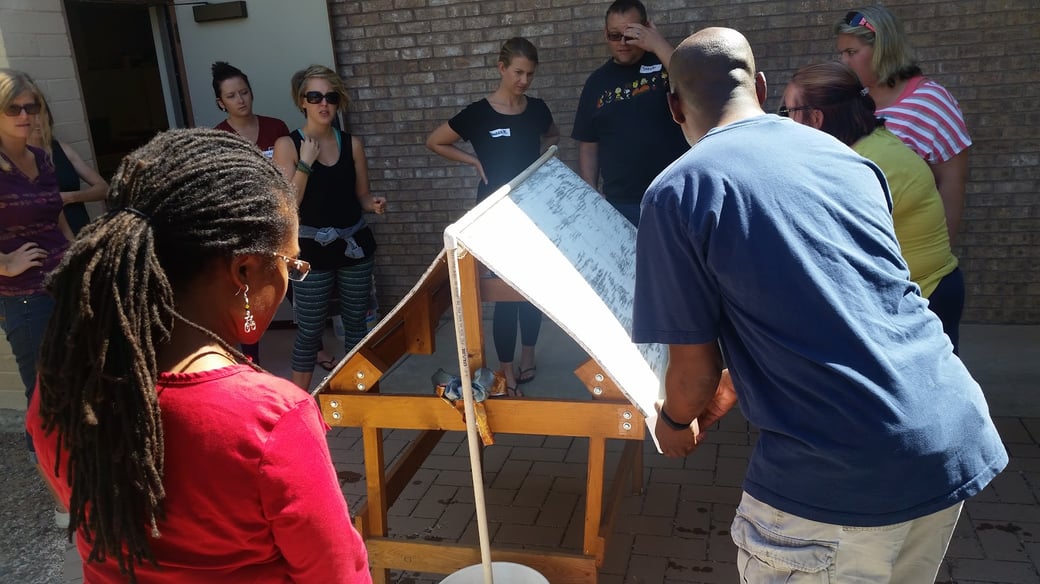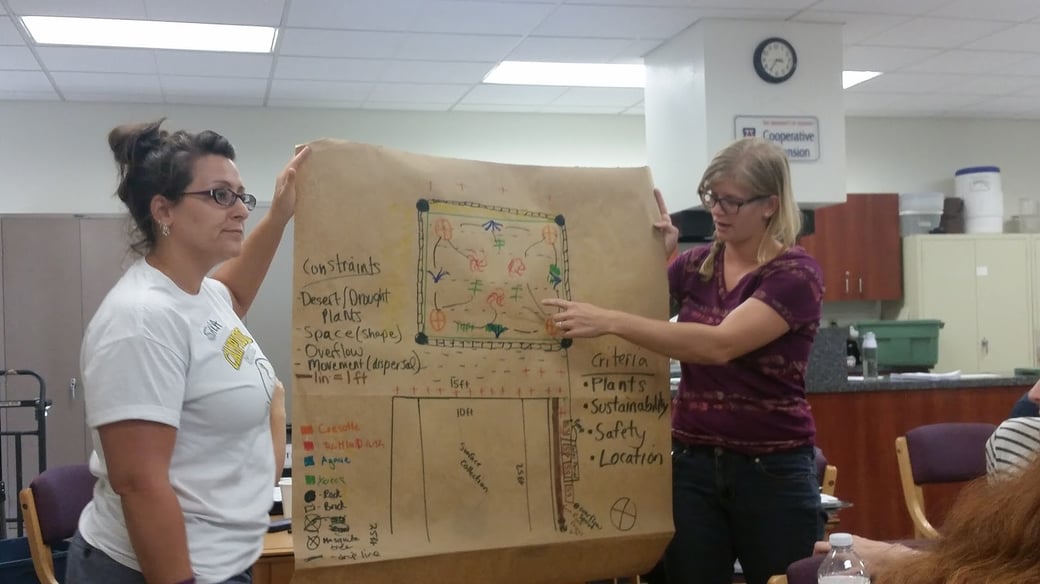Exciting Systems Thinking Collaboration between ThinkWater and Arizona Project WET
 Jeremy Solin
·
2 minute read
Jeremy Solin
·
2 minute read
I recently attended an Arizona Project WET teacher training where they are integrating systems thinking into their program and curriculum. Arizona Project WET is partnering with ThinkWater to “flip” water education That is, a small group of Arizona Project WET staff received ThinkWater systems thinking online instruction and then, with the support of ThinkWater staff, “flipped” that training to provide instruction for their teachers.
The teachers, who are involved with the Water Investigation Program (WIP), are then using ThinkWater resources and the DSRP systems thinking framework in their classroom instruction. (For an introduction to DSRP--which stands for making Distinctions and recognizing Systems, Relationships, and Perspectives--see the book Systems Thinking Made Simple or this Primer on the Four Simple Rules of Systems Thinking.)
In this blog, I will highlight a few of my observations of how systems thinking was being used in the teacher training.
The teacher training focused on WIP Unit 2: Water Use & Conservation. The lessons focused on conducting a home water audit to determine appropriate conservation measures and then exploring and designing a rainwater harvesting system.
In the rainwater harvesting lessons, the teachers first utilized a model roof to collect water. Applying DSRP, they assembled the various Parts of a home rainwater collecting System: gutters, downspouts, roofing materials, collection container, and precipitation (which they simulated with a solar-powered electric pump pushing water through a perforated pipe situated at the roof crest). During this activity, one of the teachers remarked “Isn’t it illegal to harvest rainwater?” This comes from recent western state lawsuits related to who owns the runoff. This provided a great opportunity to explore Perspectives, which include those of farmers who would prefer the water runoff to go to bodies of water where it could be used for irrigation, homeowners who would prefer to capture the water and use it directly instead of having to pay for water from a municipality to water their plants, and many others.
Next, the teachers began designing a rainwater harvesting system specifically for the building in which the training was held. Using ThinkBlocks, the teachers again identified all of the Parts of their collection System. As they wrote the parts on the ThinkBlocks, they were making Distinctions of what those parts were and were not (e.g., rainwater is not groundwater, it isn’t coming from the Salt River Project). They then placed their ThinkBlocks on a large piece of paper and began drawing and describing Relationships between these parts. For example, through gutters the roof provides water to the collection container, water needs to be transported from the container to the plants, the container needs to be large enough to capture the largest (rather than just average) rain events to not lose potential water. I thought this was a really great, low-tech way to identify relationships.
With these parts identified, they began calculations of how much rainwater could be collected given their roof surface area and precipitation, how much water the plants in their landscape will need to survive, and how large a collection container will be needed. The teachers then reexamined the design of their system to determine if changes need to be made: maybe they should use plants that require less water, maybe they needed a smaller container than they thought, perhaps they need to figure out a way to deal with overflow of their containers. Finally, the teachers presented their “final” plans to the rest of the workshop participants who were able to offer feedback and recommendations, part of the ongoing process of engineering and design.
Overall, this was a great introduction for the teachers who have begun the process of integrating systems thinking into their water curriculum and beyond. We at ThinkWater believe that once the teachers see how the students deepen their thinking through using DSRP, they will continue to expand their use of systems thinking in their curricula. And in doing so, they become part of the effort to build a nation of Water Thinkers.
Learn more about ThinkWater and systems thinking at thinkwater.us. And, if you're interested in partnering with ThinkWater to flip systems thinking based water education in your program, contact us. We'd love to explore the possibilities.
.png?width=150&height=150&name=CRL%20GOAT%20Logo%20(4).png)


